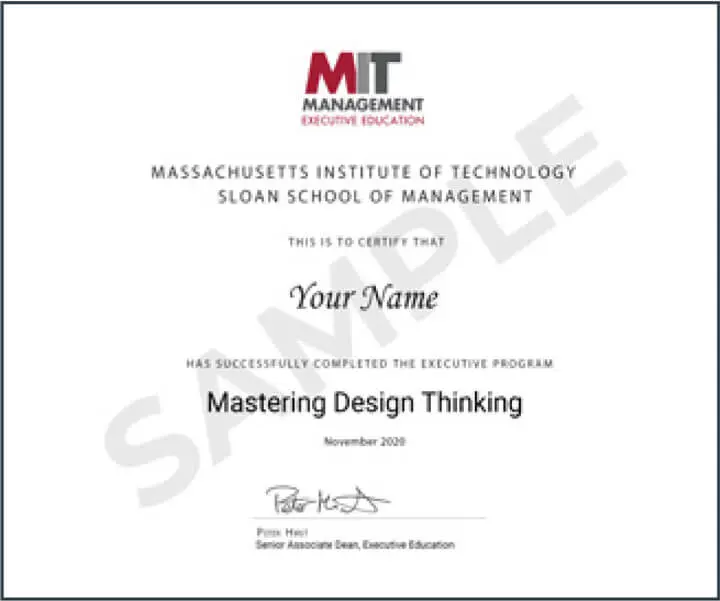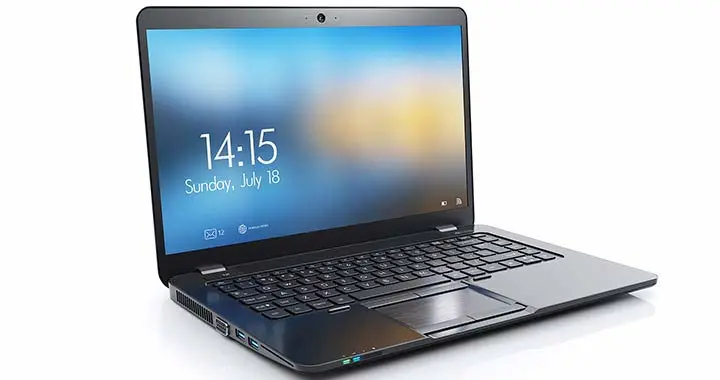Mastering Design Thinking
Why Master Design Thinking?
Design thinking has emerged as a powerful methodology, revolutionizing how we tackle complex challenges, cultivate creativity, and engineer breakthrough solutions. The global market size was valued at US$7,404.29 million in 2022 and is expected to expand at a CAGR of 7.38 percent during the forecast period, reaching US$11,352.7 million by 2028, as per a 2023 report by Industry Research Company.
Design-driven companies like Apple, Coca-Cola, IBM, Nike, P&G, and Whirlpool have outperformed the S&P 500 by 211% over 10 years, as shown in the Design Value Index—a portfolio of 16 firms that embed design thinking into strategy.
Created by leading MIT Sloan faculty, the Mastering Design Thinking program equips participants to apply design thinking and creativity to develop innovative solutions—whether improving existing products or launching new ones.
Who Is It For?
This program is for teams and individuals who want to learn a proven, systematic approach to new product development. Anyone responsible for driving innovation, growth, and the customer experience should attend, including functional and cross-functional teams.
Past participants span a wide range of job functions, including:
Product, Marketing, and Strategy: Product marketing managers, business analysts, marketing and growth managers, R&D managers, product heads
Design, UX, and Creative: Senior designers, UX researchers and designers, design engineers, creative managers, UX consultants, art directors
Leadership and Innovation: C-suite executives (CEOs, COOs, CSOs), managing directors, founders, presidents, as well as innovation and growth consultants
These professionals bring diverse perspectives from creative, customer experience, engineering, and strategic roles.
Learning Journey
The program presents a meticulously curated learning journey, strategically designed to empower participants in leveraging its benefits without compromising their professional commitments.
Begin your design thinking learning journey with the essential knowledge and hands-on application of learnings from the program.
Learn the concepts that drive design thinking
Submit your project ideas around user innovations
Identify customer needs and user groups
Translate needs into product specifications
Create a prototype
Build out the product architecture
Analyze the economics of the innovation
Choose the right development process
Present your final ideas and get real-time feedback
Program Experience

140+ Video Lectures

3 Live Teaching Sessions

3 Group Projects

10 Assignments

1 Capstone Project

6 Real-World Applications
Program Topics
Seamlessly blending in-depth faculty sessions with group projects and assignments, this program fosters collaborative learning through peer interactions and a team-based capstone project, creating a lasting peer network of value beyond program completion.
Capstone Project
The capstone project is the culmination of your Mastering Design Thinking program experience, enabling you to present an in-depth analysis of a proposed product or service. It enables you to apply design thinking principles, empowering you to address intricate business challenges with ingenious solutions. This project involves a comprehensive analysis of a proposed product or service. You will utilize the Real-Win-Worth it (RWW) screening process to ensure the solution's viability, environmental impact, and financial feasibility.
Top-performing teams will have the opportunity to present their projects to Professor Steven Eppinger, based on criteria such as the solution's innovation, presentation quality, and application of RWW metrics. This challenge will showcase your design thinking expertise and strategic capabilities, demonstrating your ability to craft innovative solutions that cater to genuine customer needs.
What Participants Say







Faculty

General Motors Leaders for Global Operations Professor of Management; Professor of Management Science and Engineering Systems; Co-Director, System Design and Management Program
Steven D. Eppinger served as deputy dean of MIT Sloan from 2004 to 2009, as faculty co-director of the Leaders for Global Operations (formerly MIT Leaders for Manufacturing) a...

Director and Founder, MIT Integrated Design and Management (IDM); Senior Lecturer at MIT; Principal, Designturn, Inc.
Matthew S. Kressy, director and founder of the MIT Integrated Design and Management (IDM) master’s degree track, is an expert in product design and development. As an entrepre...

Senior Lecturer at MIT
David Robertson is a senior lecturer at the MIT Sloan School of Management, where he teaches product development and digital product management. Prior to MIT, David was a prof...

Certificate
Get a verified digital certificate of completion from MIT Sloan School of Management. This program also counts towards an MIT Sloan Executive Certificate.
After successful completion of the program, your verified digital certificate will be emailed to you, at no additional cost, in the name you used when registering for the program. All certificate images are for illustrative purposes only and may be subject to change at the discretion of MIT Sloan.
Learn new skills with your colleagues and get special enrollment. Discounts up to 20% are available.
Learn more
Didn't find what you were looking for? Write to us at learner.success@emeritus.org or Schedule a call with one of our Program Advisors or call us at +1 401 264 8575 (US) / +44 150 730 4811 (UK) / +65 3138 5193 (SG)
FAQs
Early Registrations Are Encouraged. Seats Fill Up Quickly!
Flexible payment options available.
Starts On






